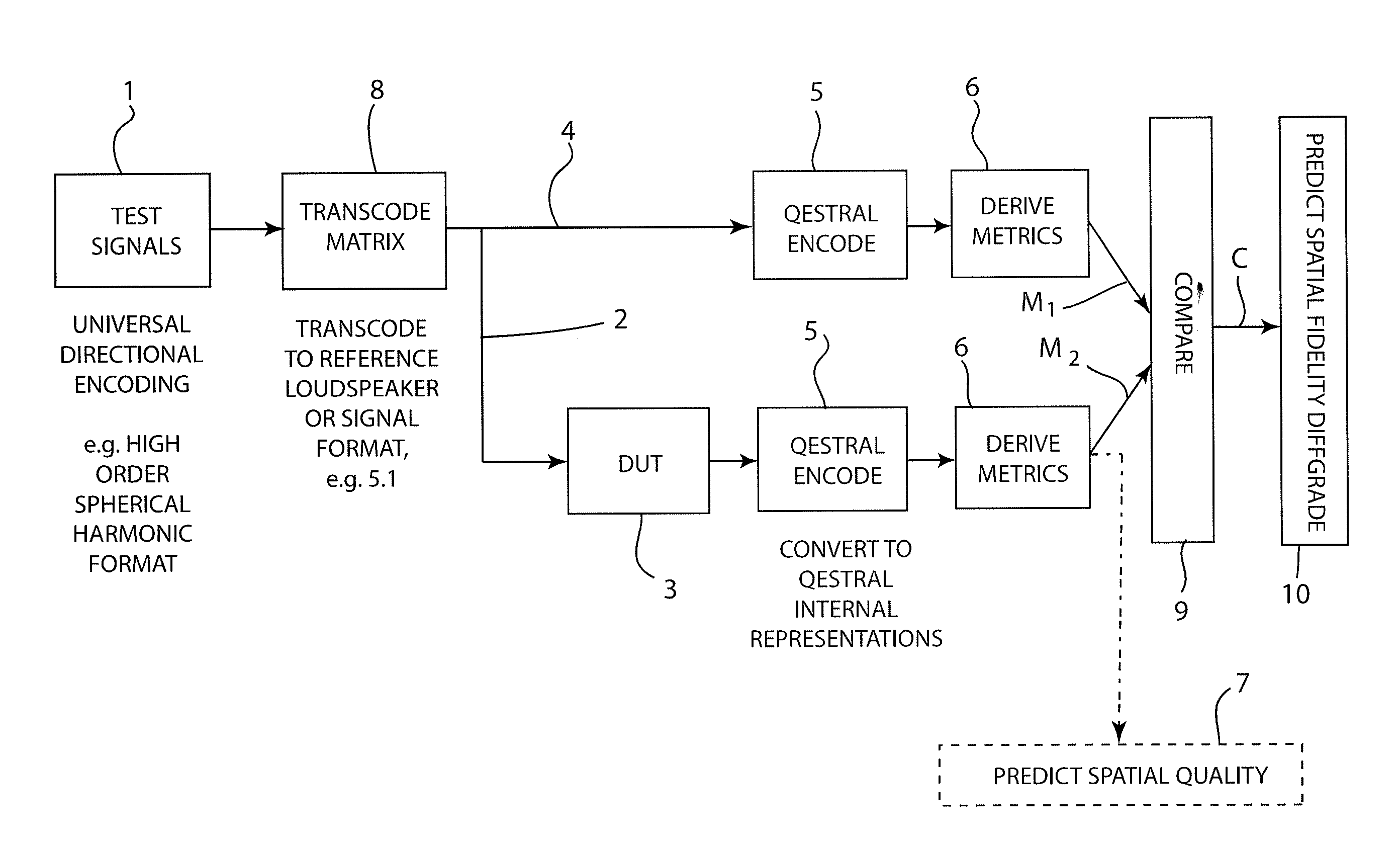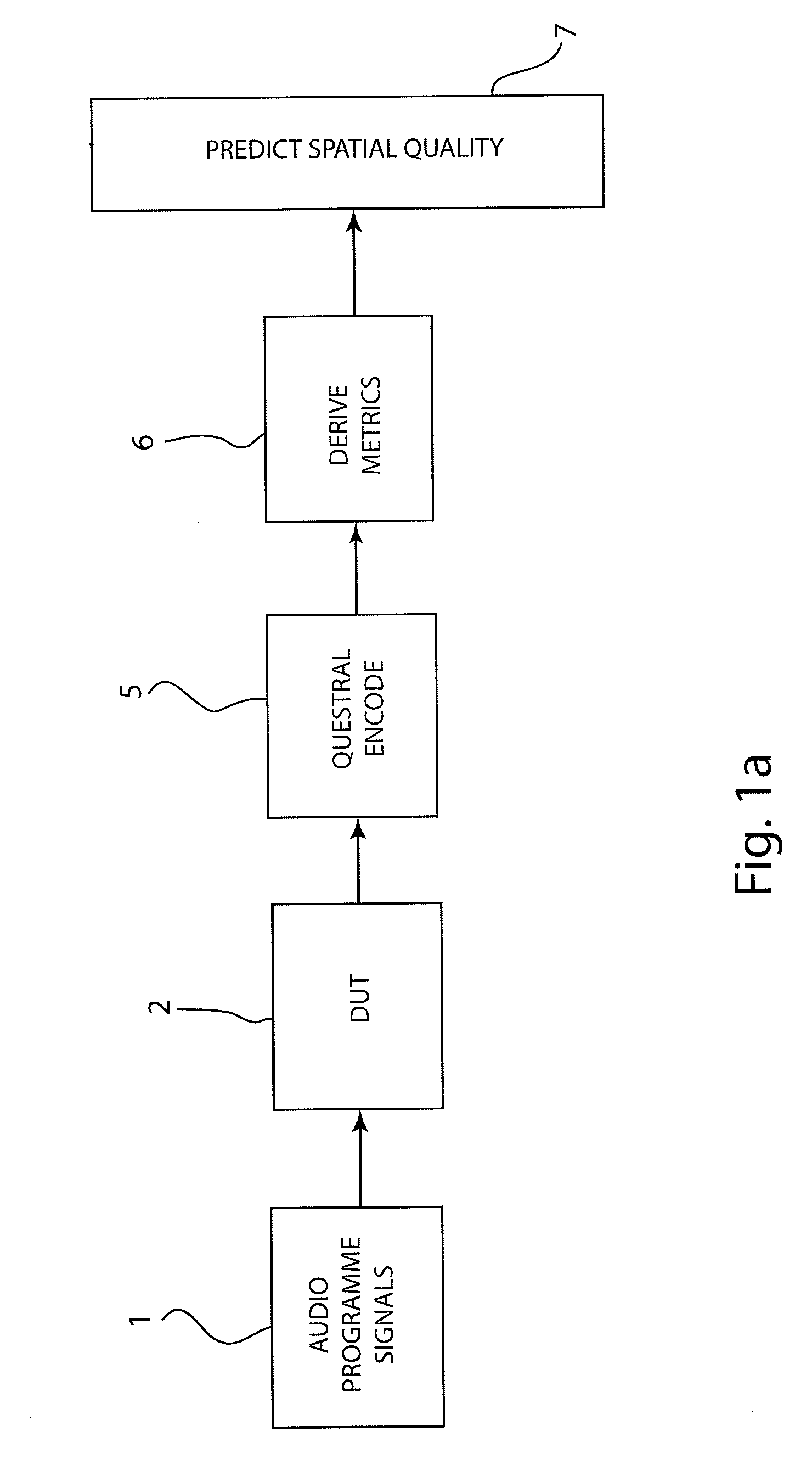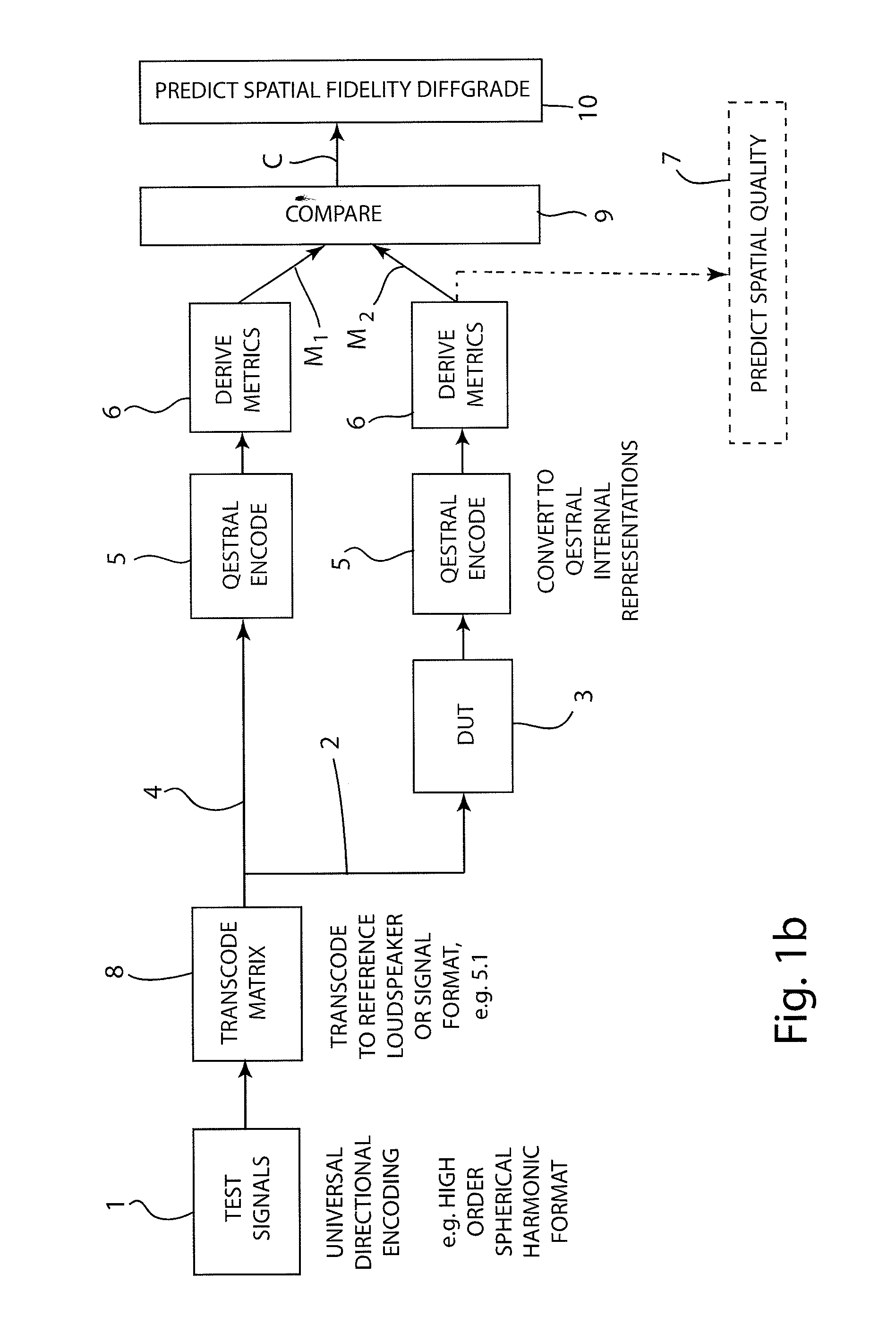System, devices and methods for predicting the perceived spatial quality of sound processing and reproducing equipment
a technology of sound processing and reproducing equipment, applied in the direction of electrical equipment, etc., can solve the problems of superfluous expensive and time-consuming listening tests
- Summary
- Abstract
- Description
- Claims
- Application Information
AI Technical Summary
Benefits of technology
Problems solved by technology
Method used
Image
Examples
first example
[0321]In the following, a specific application of the present invention is described, whereby spatial sound quality (either as an absolute quantity or as a relative quantity, i.e. a degradation of spatial sound quality) is predicted over an area for instance in a listening room in which there is installed a loudspeaker system, for instance a standard 5.1 channels surround sound loudspeaker system. Referring to FIG. 25 there is shown an overview of a process according to the invention for calculating SQ across an area. The input signals applied to the metric extraction block can either be provided as microphone signals picked up in a real listening room or as signals from virtual microphones in a simulated room, for instance provided by an auralisation programme. In case of acoustic simulation, the source position and characteristics 86, the acoustical characteristics of the simulated room 87 and the receiver (microphone) characteristics (such as directional characteristics) 88 must ...
second example
[0325]As a second example, prediction of SMOS over a listening area in a room is shown, in which the specific set of metrics listed in TABLE X is used to provide input values to the regression model.
TABLE 6Metrics used in the regression model in example 2 together with the standardisedand raw coefficients.StandardisedRawMetricDescriptionCoefficientsCoefficientsiacc_0degThe IACC calculated with the 0° head orientation.0.956221.5This value is calculated as themean IACC value across the 22 frequencybands.max_iacc_0degThe maximum value of the IACC values−0.531−283.4calculated for the 22 frequency bands,with the head facing 0°.60_max_angle_diffThe maximum absolute change in the directions0.2900.1707calculated for the spun noise testsignals whose intended angles are in therange [−30°, 30°].max_rms_diffThe maximum absolute change in RMS0.219378.6levels calculated for the 36 spun noise testsignals.Mean_Spectral_Rolloff_0degThe mean of the spectral rolloff frequency.−0.098−9.906E−4Constant4....
PUM
 Login to View More
Login to View More Abstract
Description
Claims
Application Information
 Login to View More
Login to View More - R&D
- Intellectual Property
- Life Sciences
- Materials
- Tech Scout
- Unparalleled Data Quality
- Higher Quality Content
- 60% Fewer Hallucinations
Browse by: Latest US Patents, China's latest patents, Technical Efficacy Thesaurus, Application Domain, Technology Topic, Popular Technical Reports.
© 2025 PatSnap. All rights reserved.Legal|Privacy policy|Modern Slavery Act Transparency Statement|Sitemap|About US| Contact US: help@patsnap.com



